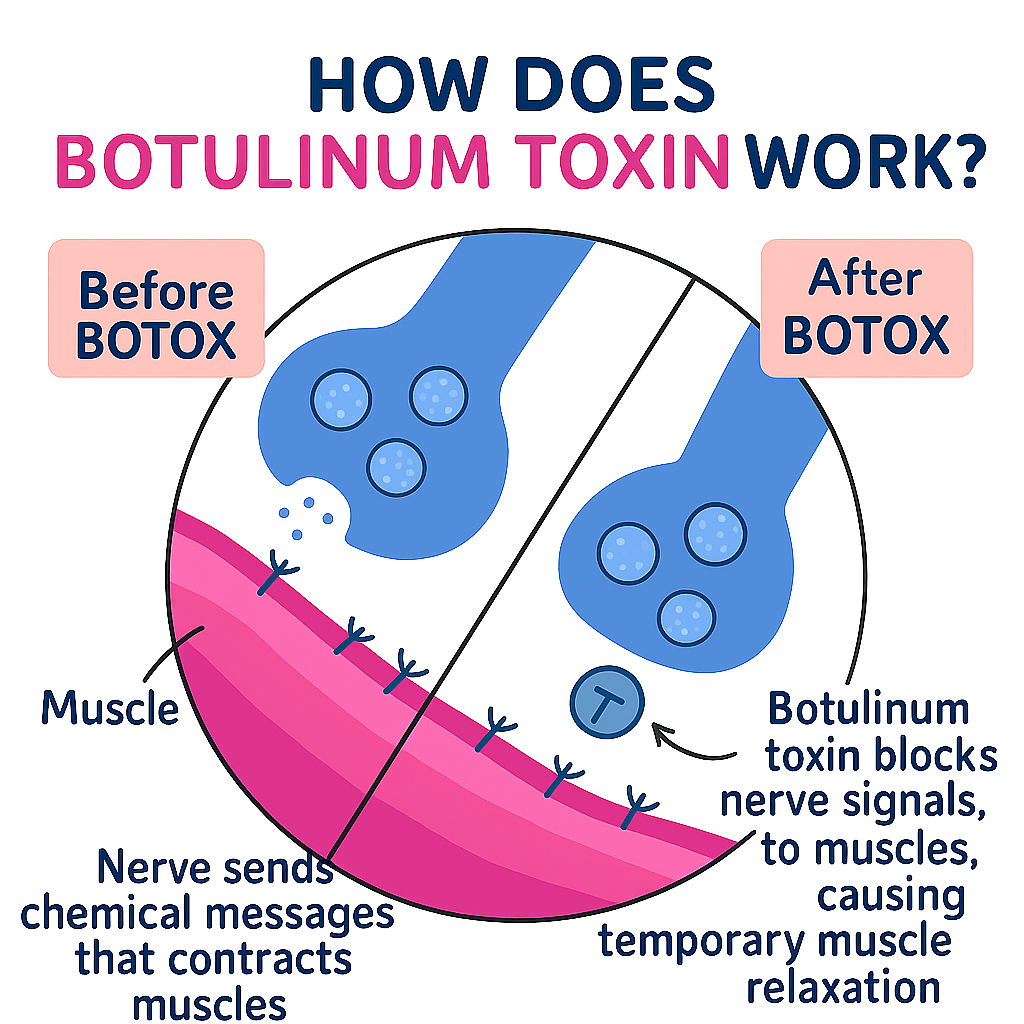The Science Behind The Smooth
Juliette Chahoud
Ever wondered what’s really going on beneath the skin when you’re injected with botulinum toxin?
Let me break it down for you, and I promise I’ll keep it short and simple.
Once injected, the toxin gets to work quickly. It targets a spot called the neuromuscular junction - where your nerve and muscle communicate.
At this junction, a special protein called SNAP-25 helps your nerve release a chemical which tells your muscle to move.
And here’s where the botulinum toxin comes in. By cleaving the SNAP-25, the botulinum toxin prevents the fusion of synaptic vesicles with the nerve cell membrane, thereby blocking the release of neurotransmitters like acetylcholine … OK I’m getting a bit too technical… let me rephrase that – the botulinum toxin binds to the SNAP-25 protein, blocking the nerve from communicating with the muscle. As a result, the muscle can’t contract, leading to softened lines and wrinkles in the treated area.
A common myth is that botulinum toxin remains in the body indefinitely – there is no credible evidence to support this. In fact, once botulinum toxin binds to the SNAP-25 protein, it has done its job. It doesn’t migrate and the body’s process of naturally breaking down the botulinum toxin commences.
At the same time, your body starts rebuilding the SNAP-25 proteins. This process usually takes three months for full recovery, which is why Botox results typically last this long. There is no magic pill to instantly undo the effects of treatment.
Therefore, if administered incorrectly (for example, by having too many units, or targeting the wrong area), it will be a looong three months waiting for those SNAP-25 proteins to rebuild – which is why it’s important to see a competent injector that you trust.
9 August 2025

